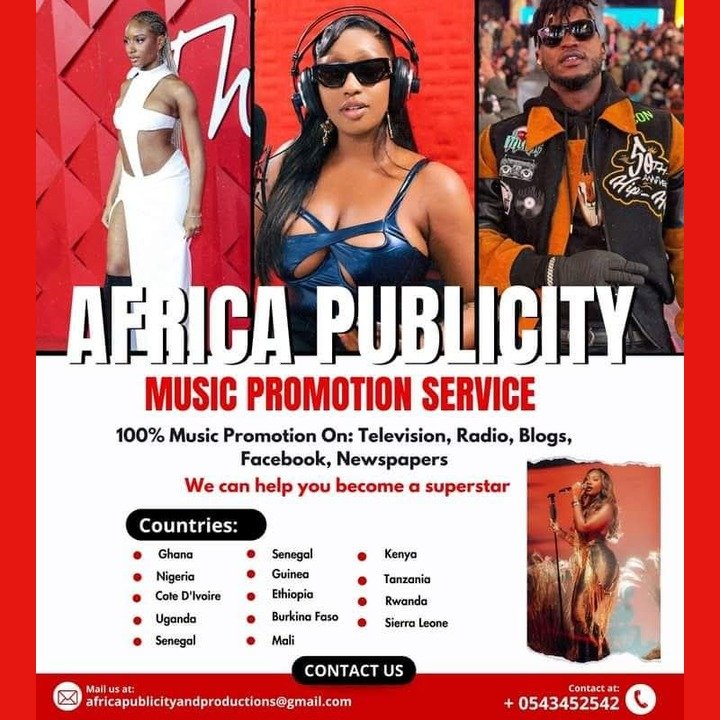Source: Africa Publicity
In the bustling city of Lagos, Nigeria, young Aisha struggled with her self-image. From a young age, she had been bombarded with images of beauty that seemed unattainable. The magazines her mother read, the advertisements on television, and the billboards in the city all featured women with fair skin, straight hair, and sharp features. These Eurocentric beauty standards were everywhere, and they were shaping Aisha’s perception of what it meant to be beautiful.
As Aisha grew older, she noticed how these beauty ideals affected her friends as well. Her best friend, Funmi, often complained about her naturally curly hair, wishing it were straight like the models they saw on TV. Funmi spent hours each week using chemical relaxers to straighten her hair, enduring burns and scalp irritation in the process. The quest for straight hair was not just about aesthetics; it was about feeling accepted and valued in a society that equated beauty with whiteness.
Across the continent, in Johannesburg, South Africa, Thandi faced similar challenges. Thandi was a talented makeup artist, known for her skill in highlighting her clients’ natural beauty. However, she noticed a disturbing trend among her clientele. Many of her customers requested lighter foundation shades and contouring techniques to make their noses appear narrower and their cheekbones more pronounced. These requests stemmed from a desire to emulate the Eurocentric features they had been taught to admire.
Thandi herself struggled with her skin color. Despite her success, she couldn’t shake the feeling that she would be even more successful if she were lighter-skinned. She had seen friends and colleagues resort to skin-lightening creams, which were readily available despite their harmful effects. These products, often unregulated, contained dangerous chemicals that could cause severe skin damage and health issues. Yet, the pressure to conform to these beauty standards was so strong that many women, including Thandi, considered using them.
In Accra, Ghana, Kwame, a sociologist, conducted research on the impact of Eurocentric beauty standards on young people. His findings were alarming. He discovered that these standards not only affected women’s self-esteem but also had a profound impact on men. Young boys and men felt pressure to date women who fit the Eurocentric mold, leading to a preference for lighter-skinned partners. This preference was evident in the media, where darker-skinned women were rarely featured as romantic leads or depicted as desirable.
Kwame’s research also revealed that the constant exposure to Eurocentric beauty ideals led to internalized racism among people of color. Many individuals began to believe that their natural features were inferior, resulting in a desire to change their appearance through various means. This internalized racism perpetuated a cycle of self-rejection and low self-esteem, affecting not only individuals but entire communities.
In Nairobi, Kenya, an activist named Mumbi worked tirelessly to combat these harmful beauty standards. She organized workshops and seminars to educate young people about the beauty of diversity and the importance of embracing their natural features. Mumbi believed that representation mattered, and she lobbied for more diverse portrayals in the media. She collaborated with local influencers, encouraging them to showcase their natural beauty and reject Eurocentric ideals.
Mumbi’s efforts began to bear fruit. Slowly, but surely, more Kenyan media outlets started featuring women with natural hair and darker skin tones. Local beauty brands also began to cater to a wider range of skin tones, offering products that celebrated, rather than masked, the diversity of African beauty. Mumbi knew that change would not happen overnight, but she was committed to challenging the deeply ingrained beauty standards that had plagued her community for generations.
Back in Lagos, Aisha found solace in the growing natural hair movement. She joined online communities where women shared their journeys of embracing their natural curls. These communities provided support, encouragement, and practical advice on how to care for and style natural hair. Aisha learned to love her curls and realized that beauty came in many forms, not just the ones depicted in Eurocentric media.
Aisha’s newfound confidence inspired her to start a blog where she documented her journey and shared stories of other women who were challenging beauty norms. Her blog gained popularity, and soon she was invited to speak at events and workshops. Aisha’s voice became a powerful tool in the fight against Eurocentric beauty standards, inspiring many young women to embrace their natural beauty.
In Johannesburg, Thandi decided to take a stand against the harmful effects of skin-lightening products. She launched a campaign to raise awareness about the dangers of these creams and to promote self-love and acceptance. Thandi collaborated with dermatologists and health professionals to provide education on the risks associated with skin-lightening products. Her campaign gained traction, and soon, she was featured in national newspapers and television programs.
Kwame, the sociologist in Accra, continued his research and used his findings to advocate for policy changes. He worked with local governments to implement regulations on beauty products, ensuring that harmful chemicals were banned and that products were safe for consumers. Kwame also partnered with schools to develop curricula that promoted positive self-image and diversity, helping young people build resilience against harmful beauty standards from an early age.
In Nairobi, Mumbi’s activism led to significant changes in the local media landscape. More and more media outlets embraced diversity, featuring a broader range of skin tones and hair types. Mumbi also worked with international beauty brands to ensure that their advertisements in Kenya were inclusive and representative of the local population. Her efforts contributed to a shift in societal attitudes, making it clear that beauty was not confined to Eurocentric ideals.
As these stories from Lagos, Johannesburg, Accra, and Nairobi demonstrate, Eurocentric beauty standards have far-reaching and damaging effects on people of color. These standards perpetuate a cycle of self-rejection and low self-esteem, leading individuals to take drastic measures to alter their appearance. However, through education, activism, and community support, it is possible to challenge and change these harmful norms. Embracing diversity and celebrating natural beauty are crucial steps toward building a more inclusive and accepting society.








